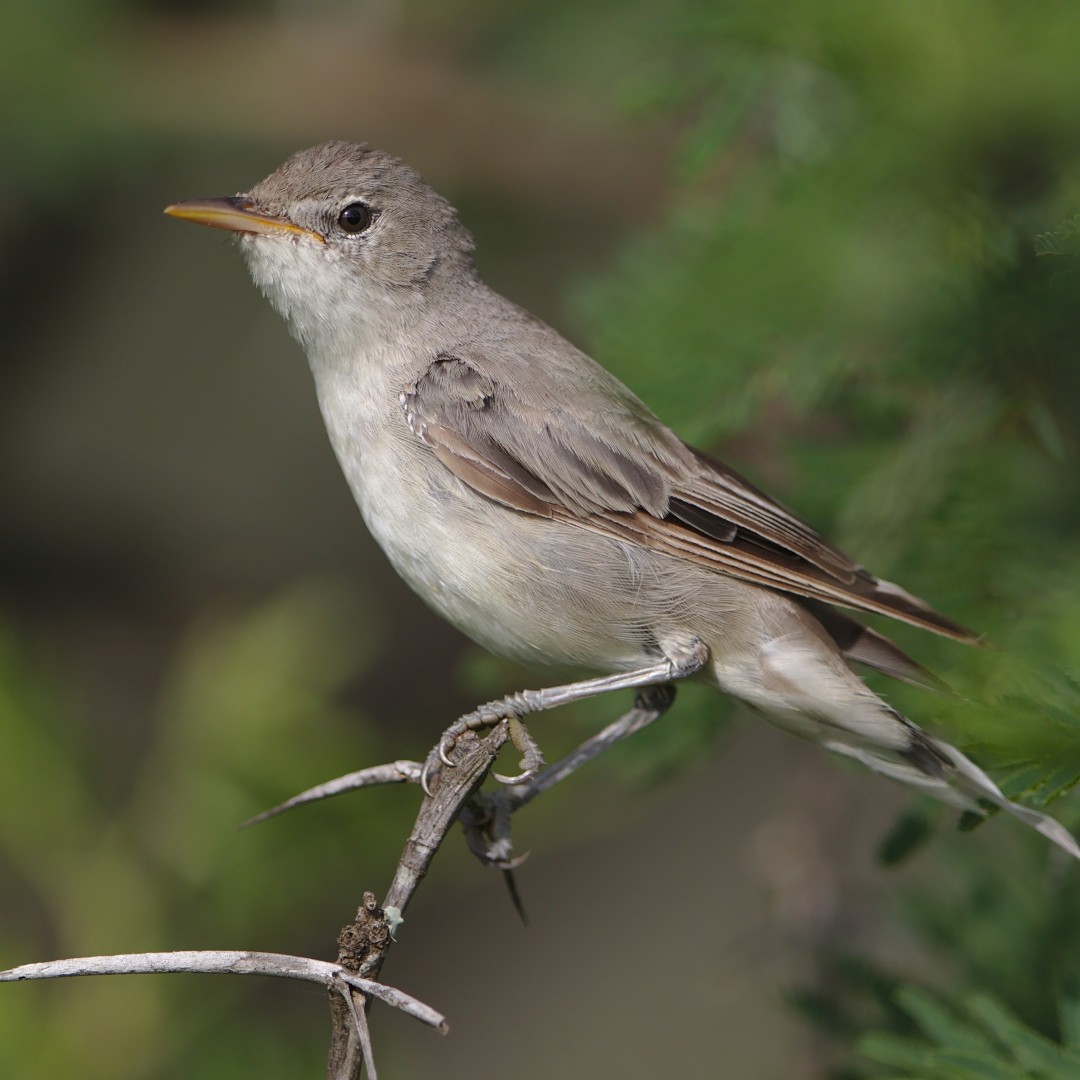Olive-tree Warbler
A species of Warbler Scientific name : Hippolais olivetorum Genus : Warbler
Olive-tree Warbler, A species of Warbler
Botanical name: Hippolais olivetorum
Genus: Warbler
Content
Description General Info
 Photo By Derek Keats from Johannesburg, South Africa , used under CC-BY-2.0 /Cropped and compressed from original
Photo By Derek Keats from Johannesburg, South Africa , used under CC-BY-2.0 /Cropped and compressed from original Description
The olive-tree warbler (Hippolais olivetorum) is an Old World warbler in the tree warbler genus Hippolais. It breeds in southeast Europe and the near east. It is migratory, wintering in eastern and southern Africa, from Kenya south to South Africa. This small passerine bird is a species found in open-canopy oakwoods, olive groves, orchards and almond plantations. 3-4 eggs are laid in a nest in a low tree or a bush. This is a medium-sized warbler, similar to in size to the barred warbler, with a slightly longer bill and shorter tail. It is the largest Hippolais warbler, with a heavy bill, rather flat crown, long wings, and heavy legs. The adult has a dusty- or brownish-grey back and wings, and dusty-white underparts. It feeds on invertebrates. Its song is a succession of loud creaks and squawks, lower in pitch than other Hippolais warblers, and slower in delivery. The genus name Hippolais is from Ancient Greek hupolais, as misspelt by Linnaeus. It referred to a small bird mentioned by Aristotle and others and may be onomatopoeic or derived from hupo,"under", and laas, "stone". The specific olivetorum is Latin for "of the olive groves ". 
Size
18 cm
Nest Placement
Shrub
Feeding Habits
Olive-tree Warbler primarily consumes insects, invertebrates, and some seasonal fruits and berries like figs. Foraging in tree canopies and tall bushes, olive-tree Warbler exhibits a lumbering movement, using a distinctive tail-waving behavior similar to that of H. languida while feeding.
Habitat
The olive-tree Warbler predominantly resides in habitats such as orchards, notably those growing almonds, olives, and pistachios, as well as in open oak woods and maquis on mountain slopes. It also frequents savanna-like woodlands with sparse trees on grasslands. This bird shows a preference for environments that feature some taller trees and is mainly a coastal and island species, with less frequent occurrences far inland.
Dite type
Insectivorous
General Info
Feeding Habits
Bird food type

 Photo By Derek Keats from Johannesburg, South Africa , used under CC-BY-2.0 /Cropped and compressed from original
Photo By Derek Keats from Johannesburg, South Africa , used under CC-BY-2.0 /Cropped and compressed from original Scientific Classification
Phylum
Chordates Class
Birds Order
Perching birds Family
Reed warblers Genus
Warbler Species
Olive-tree Warbler